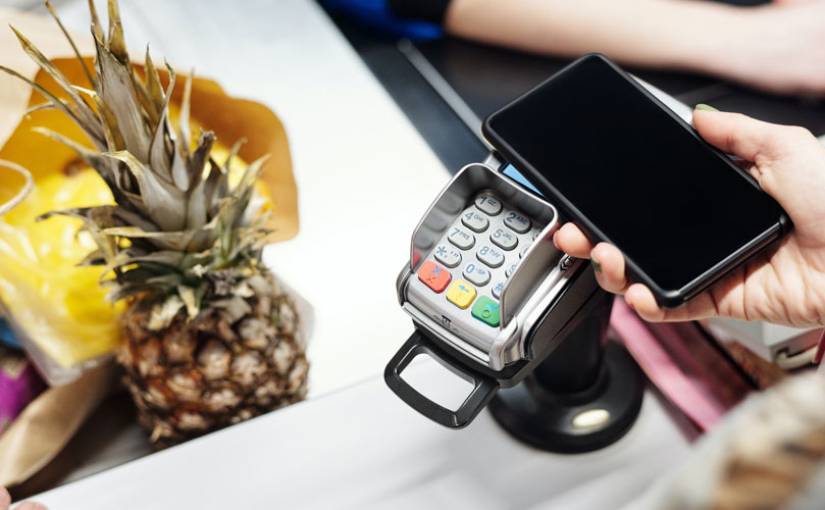Since the beginning, the payment models have undergone a tremendous transformation from the barter system to cryptocurrencies. In the modern era, money exists in both digital and physical form. The Former is getting more prominent as the technology is making digital money safer, more accessible, and convenient via e-wallets. Here are the top e-wallet technology trends to look for in 2020.
The digital money concept has mitigated many of the challenges that happen with traditional monetary transactions such as lack of transparency, accountability, accessibility, mobility, security, and many more. The popularity of the internet has acted as a platform for electronic money transactions and made the payment experience convenient.
For the last five years, a new mode of payment has emerged in the digital payment market, it’s called mobile payment or e-wallets. And due to its easy access and convenience, the e-wallet payment mode has become the most popular payment method among all.
Considering the fact that the global digital wallet transactions had reached $4,296 billion in 2018 and are expected to reach $13,979 billion by 2022, the e-wallets seems like the future of payments.
The most interesting thing to know is that the innovations in the e-wallet ecosystem have just started. The next couple of years will witness advanced technologies integrating into the mobile payment system to make it more secure and convenient.
Biometric Authentication
The year 2020 will see the emergence of biometric authentication as a verification method for financial transactions. It is based on the biological and structural characteristics of the customer and involves fingerprint recognition, iris recognition, and facial recognition.
The reason behind why biometric authentication will be popular in the near future is the rise in the cases of identity theft and fraud. The biometric authentication comes as a secure and reliable solution for mobile payments. As biometric security involves an individual’s unique characteristics, it helps in addressing the challenges such as lack of customer trust with e-wallets.
Types of biometric authentication
Here we’ll give you a basic understanding of the types of biometric authentication methods and how they are used. If you aren’t interested in knowing that, you can skip to the next technology trend – Smart Speaker Payments.
Fingerprint Scanners
One of the most commonly used biometric authentication methods is fingerprint scanning. Since most of the mobile devices are now equipped with fingerprint scanners, it becomes feasible to rely heavily on this technology. Though fingerprint sensing is not a fool-proof technology, it is inexpensive and a viable option for biometric authentication.
Facial Recognition
The facial recognition technology is based upon measuring and comparing the individual’s faceprints to grant access. Faceprints are the different measurements of one’s face and when a sufficient number of faceprints are matched, the system grant access to the user. Many high-end mobile devices have the facial recognition feature and a fintech company can incorporate such features for the users of such devices.
Voice Recognition
The voice identification technology measure the speaker’s voice profile by combining a number of data points and compare them with the benchmarked/stored database to grant access.
The technology also includes the speaker’s throat and mouth movements while producing voice. This technique eliminates the validation errors posed by imitation of voice or voice change due to sickness.
Retina/Iris scanners
There are two types of eye scanners are used commercially, one is retina scanners and second is the iris scanner. Retina scanners read and compare blood vessel patterns in the eye which gets visible by projecting a bright light towards the eye. Whereas the iris scanner looks for the unique patterns in the colored ring that exists around the eye pupil.
Both the eye scanning techniques are prone to security hacks. For example, one can trick the scanners using a photograph. It becomes also hassled to use if the individual is wearing contact lenses or eyeglasses.
Smart Speaker Payments via e-Wallets
Smart home assistant is the latest trend in the speaker market and the e-wallet industry has started leveraging its benefits. It actually successfully commercialized way back in 2014 when Amazon took a stride by launching its first smart speaker, Alexa. Several other market players have entered this market segment as the home automation has become mainstream in recent years.
A report by Statista states that in the month of November in 2017, 82% of the smart speaker assistant users used voice commands to seek information. Whereas, 35% of the users used the assistant to make the purchase of clothing, home care, etc.
The report further states that 28% of the users made payments or send money via smart speaker assistants.
Another report by business insider predicts a jump in the number of smart speaker payments. BI stated that by 2022, almost 77.9 million people will use the smart speaker payment systems as compared to 18.4 million in 2017.
Cryptocurrency e-Wallets
Despite the ups and downs in the market, the number of cryptocurrency wallet users have increased throughout time. Till now (beginning of 2020), over 40 million cryptocurrency-based e-wallets are existing.
Statista reports that the number of cryptocurrency wallet users have escalated from 6.7 million in the first quarter of 2016 to 34.6 million in the first quarter of 2019.
However, it is said that purchasing cryptocurrencies using e-wallets is a convenient way to start with cryptocurrency investments. It is obvious that you would need a digital wallet to store the digital currency you’ve bought. The beginners need easy to use and understand e-wallets to store their digital money.
NFC Payments
The United Kingdom is seeing the biggest growth of NFC payments. You would find busses and tube stations accepting phone payments via NFC. China is also utilizing NFC technology for almost all of its public transport.
e-wallets that are already using this technology are Samsung Pay, Apple Pay, and Google Pay. This is how payment via NFC works – NFC enabled phones to communicate to payment gateways via NFC card machines using a close proximity radio frequency identification. It allows a secure and hasslefree contactless payment option.
NFC wins over PIN authentication as it transfers the encrypted data to the POS devices instantly. The UK finance believes that the usage of NFC based contactless payments will surge in the coming future and will stand at 36% of all the payments by 2027.
AI-powered Wallets
For the last five years, Artificial Intelligence (AI) has improved a lot. The current possible application of AI in e-wallet ecosystem is customer-facing AI-powered ChatBots. E-commerce businesses are adopting these intelligent chatbots to address the customer’s concerns including payments.
Artificial Intelligence technology is mature enough to automate the payment process with the prior approval of customers. Some e-wallet development service providers have already started testing automatic mobile payment capabilities using AI.
Digital Wallets boosting International Remittance
Many countries across the globe count International Remittance as a major portion of their GDP. International remittance is the transfer of money by a person working in foreign soil to his/her family residing in the native country.
Using e-wallet services, people are transferring money to their families without any hassle. Gone are the days when someone has to go to the bank and fill in a form for foreign transfer. Technology has brought people closer to each other.
Conclusion
The innovation in mobile development space has paved the way for e-wallets and the financial services have started seeing the positive impact of it for the last five to six years. Now, is the time if you are looking for a technology solution provider that can develop your e-wallet application. Rest, the choice is yours.










